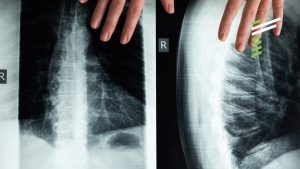At a Glance
After a 30-week project with Renoir Consulting to improve drilling cycle times and improve processes, this client in oil and gas achieved a 65% reduction in well downtime and a more than 50% in purchase request-to-purchase order durations.
Background
The oil and gas industry is in a transition. Oil companies are looking for new ways to sustain a competitive advantage in an uncertain marketplace, as they adapt to a world of resource abundance which is leading to sustained lower oil prices and a focus on cost, efficiency, and speed.
Our client is one of the largest hydrocarbons exploration and production companies in South Asia, operating one of the biggest gas reservoirs in the region. They are primarily engaged in exploration, development and production of natural gas, crude oil, condensate, and natural gas liquids. The gas reservoir accounts for more than 90% of the client’s revenues.
The client’s business model was changing from ‘cost-plus’ to an open market one. One of the biggest impacts of the change was the need for the client to fund all exploration and development activities. Doing this efficiently and sustainably required improved margins, and that meant more efficient and effective ways of working.
Analysis
We were brought in to analyse the client’s business processes and management systems in the following areas:
- New well management process
- Seismic survey acquisition and processing
- Operation and maintenance of production fields
- Supply chain and business planning
Our two-week analysis unearthed for improving operational planning and execution processes, leading to more efficient and effective delivery of the client’s products and services.
We also revealed underlying weaknesses that had an adverse effect on progress, both in field operations and at the head office. This resulted in cost over-runs and/or delayed revenues. These issues could be significantly alleviated by:
- Better management control practices
– Improving the utilisation of KPIs and implementing performance review mechanisms.
– Introducing formal management tools that flag off-schedule conditions and plan attainment, along with processes to assess root causes and mitigation plans on a short interval basis.
– Enhancing utilisation of active management practices at every management level through training, practical application, and continuous coaching. - Processes
– Introducing accountability for operational processes effectiveness through emphasis and increasing visibility of plan achievement at key process steps.
– Introducing measures and controls along the key process steps, along with corrective action process. - Structure
– Adding structure and formalising communication and priority setting.
– Clarifying roles, responsibilities, and accountabilities.

Vendor management saves healthcare centre $12 million

Craft a quality patient experience with management supervision
Ready for a change in your organisation?
Project Approach
Based off the results of our analysis, we developed, designed, and deployed the following solutions within a 30-week period:
- A fit-for-purpose management control system (MCS) that would allow the client to gain predictability and consistency in managing new wells, seismic, reservoir, operations, maintenance, supply chain and business planning.
- New well project management to reduce drilling cycle times.
- Improved production management processes and increased supply chain management efficiency.
- Improved strategy and business planning processes.
“The MCS installed by Renoir has given me greater visibility of both our overall performance, as well as the departments within my area.”
General Manager, Human Resources
- A culture of continuous improvement through training and coaching of project team members and key people.
Project Implementation
A joint project team was assembled consisting of client-side experts and our own consultants. This team worked to identify issues and root causes, assess impact, and implement our solutions. Extensive management and supervisory training, along with ongoing follow-up, coaching, and positive reinforcement continued throughout the duration of the engagement.
The joint project team identified that many of the root causes for low productivity arose from gaps in management controls, coupled with a lack of operational planning and quantitative, real-time progress measures.
A daily measurement system of work was implemented which, when completed by each supervisor, enabled a baseline to be set, tracked for progress, and objectively assessed for results and issue resolution.
Significant time was invested in training management and supervisory levels, to ensure understanding of new and enhanced management controls and techniques. All elements were installed with detailed follow-up to assess immediate results and preparedness for sustainability of the full construction project cycle.
Results
65%
Reduction in well downtime
> 50%
Reduction in PR-to-PO duration
Seismic forecast improved from delay of several months to on-time completion
The client is now well on its way to a culture of improved efficiency and knowledge sharing, fuelled by a culture of continuous improvement.
Note:
PR = Purchase Request
PO = Purchase Order
Drive performance through strategic KPIs and a Management Control System.











